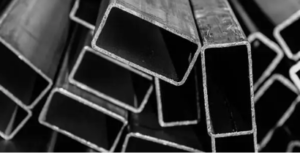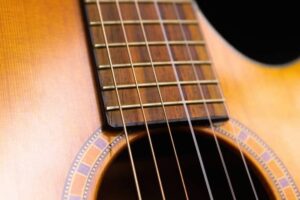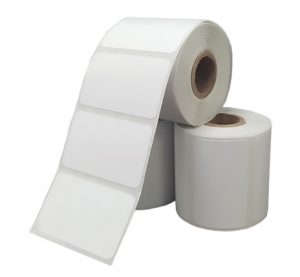In the realm of financial solutions, non-bank lenders have emerged as an increasingly popular alternative to traditional banking institutions in New Zealand. Offering a diverse range of services, these lenders provide flexible options for individuals and businesses seeking loans outside the conventional banking framework.
In this article, we delve into the world of non-ban k lenders in New Zealand, exploring their benefits, services, and why they’re becoming a go-to choice for many. For more information about the non bank lenders, click here.
k lenders in New Zealand, exploring their benefits, services, and why they’re becoming a go-to choice for many. For more information about the non bank lenders, click here.
Non bank lenders in New Zealand offer tailored financial solutions outside traditional banking norms. With flexibility, quick approvals, and personalised service, they cater to diverse needs, from mortgages to business loans. As technology advances and consumer preferences change, these lenders are becoming a go-to choice for individuals and businesses alike, filling a vital gap in the financial market.
Understanding Non-Bank Lenders
As the name suggests, non-bank lenders are financial institutions that provide lending services without being traditional banks. They encompass various entities such as credit unions, peer-to-peer lending platforms, mortgage trusts, and private lenders. Unlike banks, non-bank lenders are not subject to the same stringent regulations, allowing them to offer more personalised and tailored financial solutions.
Benefits of Choosing Non-Bank Lenders
- Flexibility: Non-bank lenders often have more lenient lending criteria compared to banks, making them an attractive option for individuals or businesses with less-than-perfect credit histories.
- Quick Approval: The streamlined processes of non-bank lenders typically result in quicker loan approvals, allowing borrowers to access funds promptly, which is crucial for time-sensitive financial needs.
- Specialised Services: Many non-bank lenders specialise in niche markets, offering customised loan products tailored to specific industries or purposes. This specialisation can provide borrowers with unique benefits not available through traditional banks.
- Personalised Approach: Non-bank lenders often prioritise personalised customer service, offering a more human-centric approach to lending. Borrowers may find it easier to communicate with decision-makers directly, leading to a smoother borrowing experience. For more information about the non bank lenders, click here.
Services Offered by Non-Bank Lenders
- Mortgages: Non bank lenders in New Zealand play a significant role in the mortgage market, providing home loans to individuals who may not meet the strict criteria of traditional banks. They offer various mortgage products, including first-home buyer loans, refinancing options, and loans for property investment.
- Business Loans: Small and medium-sised enterprises (SMEs) often turn to non-bank lenders for business financing. Whether it’s working capital loans, equipment finance, or expansion funding, non-bank lenders offer tailored solutions to meet the unique needs of businesses.
The Rise of Non-Bank Lenders in New Zealand
The landscape of lending in New Zealand has seen a significant shift in recent years, with non-bank lenders gaining traction and market share. Several factors contribute to this trend:
- Market Demand: As traditional banks tighten their lending criteria, there’s a growing gap in the market for alternative lending options. Non-bank lenders step in to fill this void, catering to borrowers who may not meet the strict requirements of banks. For more information about the non bank lenders, click here.
- Technology Advancements: The rise of financial technology (fintech) has revolutionised the lending industry, making it easier for non-bank lenders to reach potential borrowers through online platforms and digital marketing strategies.
- Changing Consumer Preferences: Consumers today value convenience and flexibility in their financial dealings. Non-bank lenders offer a more streamlined and customer-centric approach, aligning with the preferences of modern borrowers.
Conclusion:
Non-bank lenders in New Zealand offer a compelling alternative to traditional banking institutions, providing flexibility, personalised service, and specialised financial solutions. Whether it’s mortgages, business loans, or personal financing, these lenders cater to a diverse range of needs, filling a crucial gap in the market.
As the demand for accessible and tailored lending options continues to grow, non-bank lenders are poised to play an increasingly vital role in the country’s financial landscape. For borrowers seeking a more responsive and accommodating lending experience, exploring the offerings of non-bank lenders may prove to be a wise choice.

 You might not realise it, but stainless steel is used for a vast variety of purposes. It might be in your rings or the frame of your car, or it might be the rigging on your favourite fishing boat. It is even the building material of choice for a wide range of commercial and industrial buildings.
You might not realise it, but stainless steel is used for a vast variety of purposes. It might be in your rings or the frame of your car, or it might be the rigging on your favourite fishing boat. It is even the building material of choice for a wide range of commercial and industrial buildings. Many businesses are interested in
Many businesses are interested in  Several solar panel sizes can generate electricity in your home, with different prices and rebates for each. The amount of energy a system will save you will depend on how much sunlight it receives and the type of home you live in.
Several solar panel sizes can generate electricity in your home, with different prices and rebates for each. The amount of energy a system will save you will depend on how much sunlight it receives and the type of home you live in. The thickness of your guitar strings can make a massive difference in the sound of your acoustic instrument. The type of metal, the coating, and the gauge all influence how your strings will sound. These factors can change how reverb and other effects work on your line.
The thickness of your guitar strings can make a massive difference in the sound of your acoustic instrument. The type of metal, the coating, and the gauge all influence how your strings will sound. These factors can change how reverb and other effects work on your line. Food imports are an essential part of New Zealand’s economy. They provide jobs for people across the country and support local food businesses. Many food importers exist, including brokers, distributors, and wholesalers. However, supermarkets, fast food outlets and the hospitality industry are the primary buyers of imported foods.
Food imports are an essential part of New Zealand’s economy. They provide jobs for people across the country and support local food businesses. Many food importers exist, including brokers, distributors, and wholesalers. However, supermarkets, fast food outlets and the hospitality industry are the primary buyers of imported foods. There are several
There are several